During my visit to Eshott on August 22nd, I
didn't get to see as much as I had planned. The A1 was solid crawling traffic,
giving no chance to get the convoy across the carriageway heading North to
explore the North side of the airfield. So on the last day of the school
holidays, we took a trip North in the normal car, to visit Eshott and
Northumberlandia, heading to Eshott first. The pictures below show an airfield
map which, along with the thumbnail maps in each picture, will help to
identify the location. Next is an aerial view of Eshott from a flight in 2014,
looking approximately South. Passing the normal airfield entrance, we
continued to the next junction for a minor road that now uses the Northern
Perimeter track. We joined the perimeter track at the North Western corner of
the airfield, near to one of the underground fuel stores. The image looking
over the gate is looking South along the perimeter track with the fuel store
road off to the right. Off to the left in the distance, is the part of the
airfield which remains active.
|
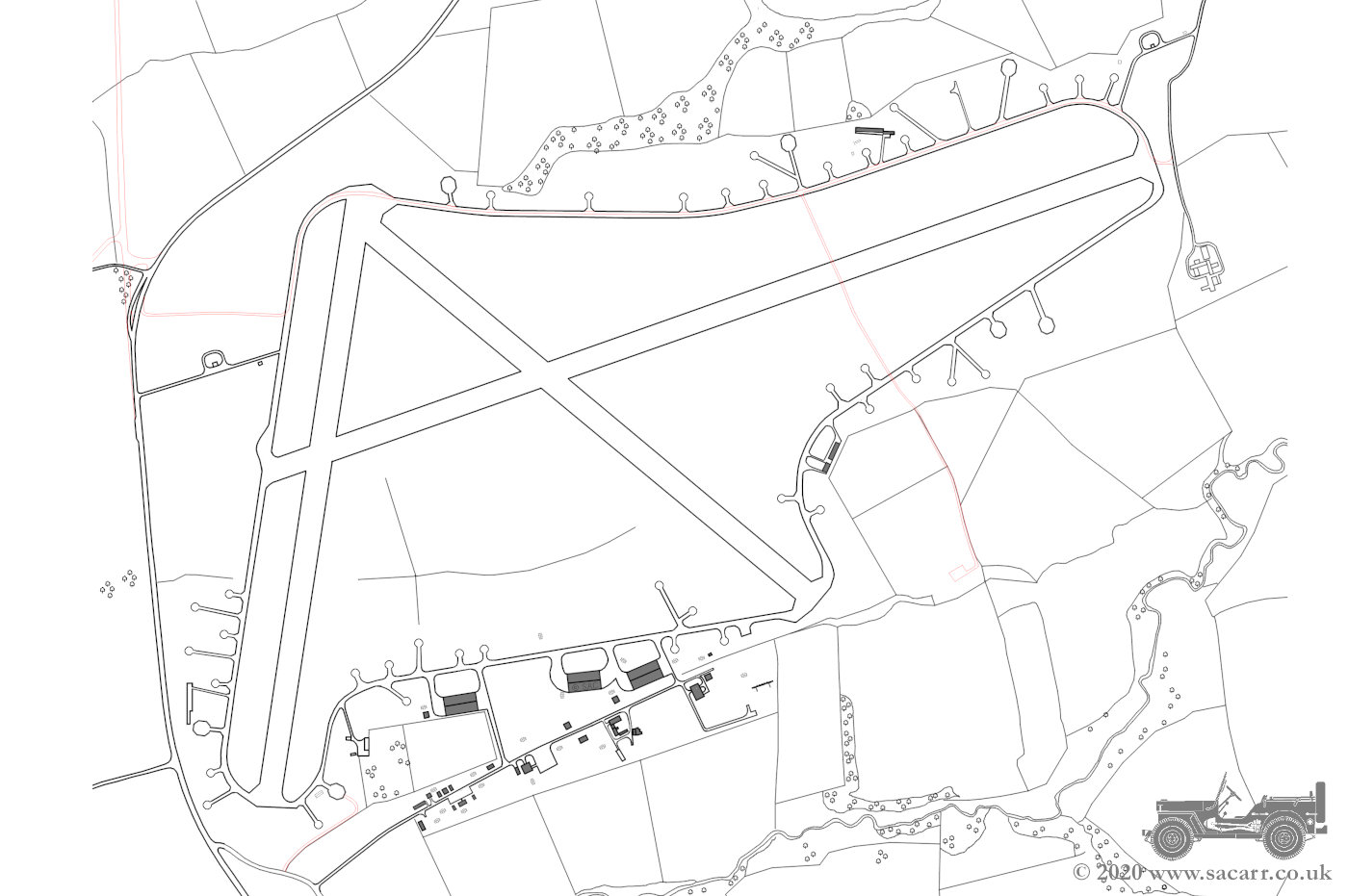
|
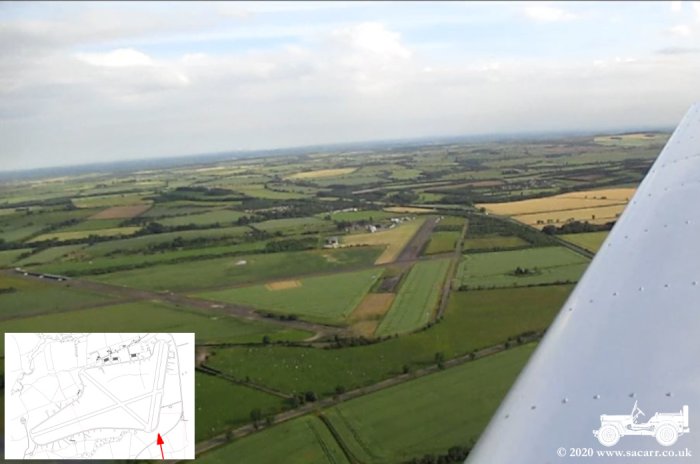
|
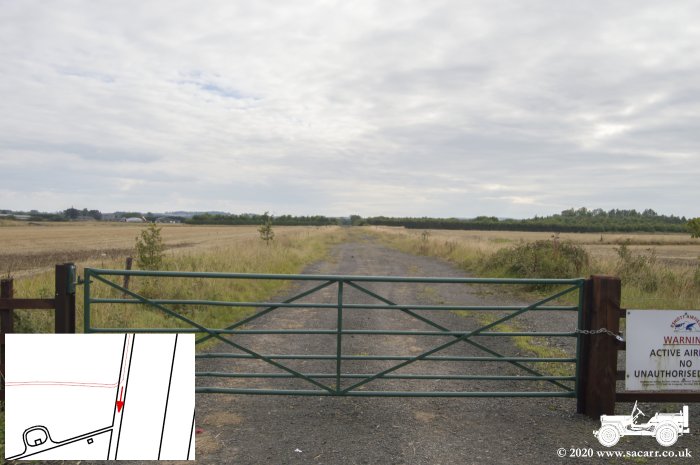
|
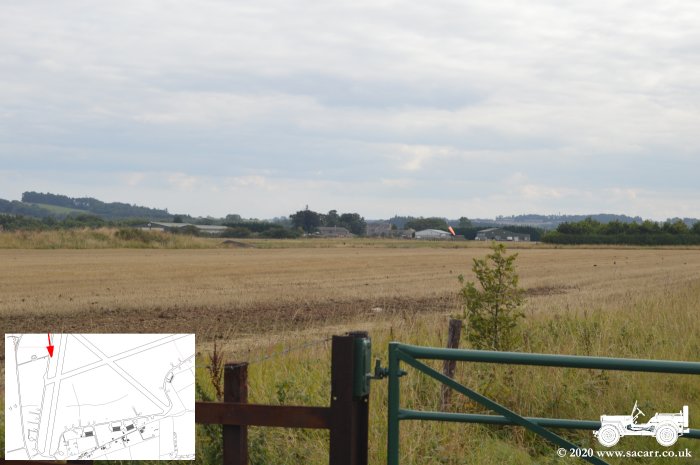
|
Looking North, the perimeter track continues North for a few hundred feet
before curving around to the East across the ends of the two secondary
runways. The runway survives, but is severely overgrown, with large sections
of concrete and demolished buildings piled up in the undergrowth. From here,
the perimeter track heads approximately East. On the left side of the road at
the end of the runways, there are a number of large concrete foundations with
the remains of 'I' section steel protruding from the concrete. I don't know
where these are from, as the hangars were all on the South side of the
airfield and it seems a long way to move them just to be dumped.
|
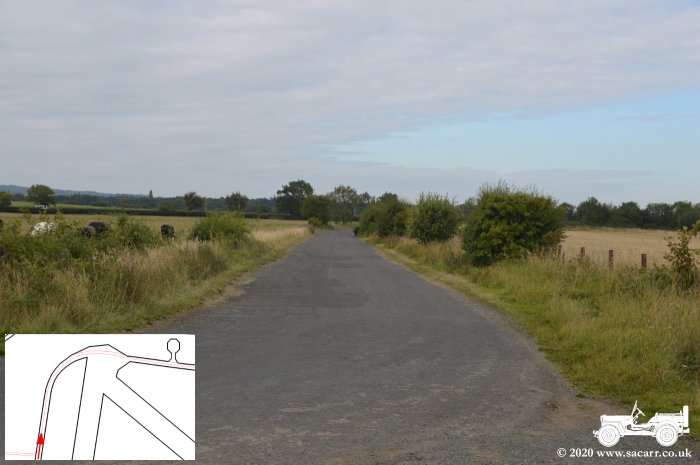
|
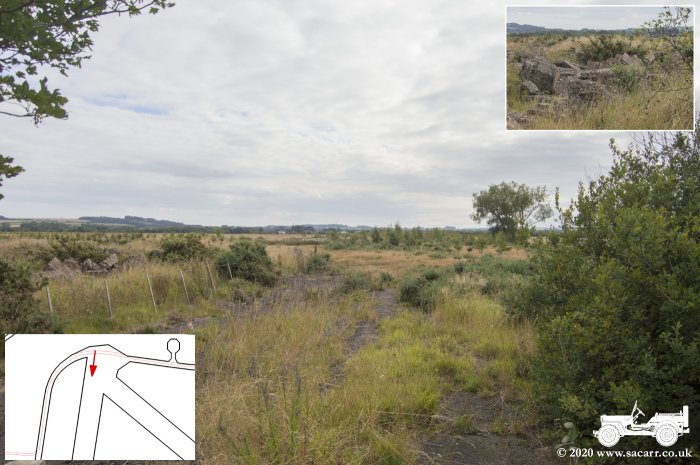
|
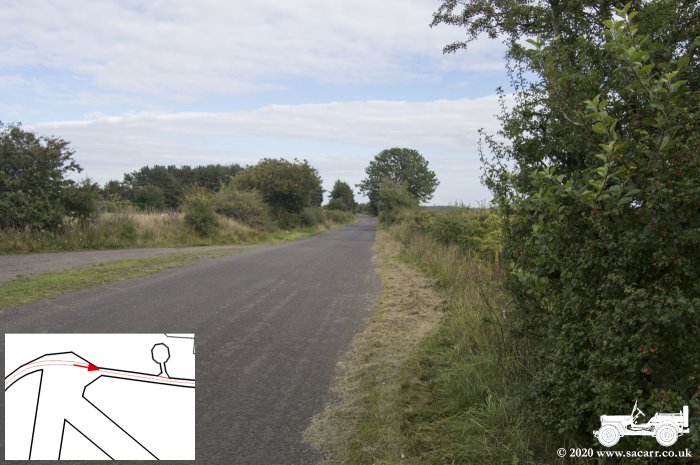
|
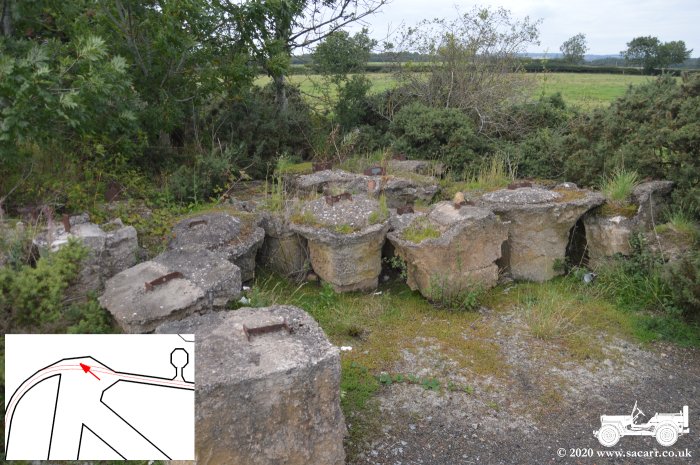
|
A little further East on the perimeter, there is a large concrete pan
dispersal. Based on RAF Morpeth, I suspect this may have had a blister hangar
over it. Many of the other dispersals along this stretch of perimeter are much
smaller pans. The pans themselves are concrete while the tracks leading to
them were tarmac covered. In most cases, this tarmac is breaking up and
overgrown with grass. The tracks still stand out due to the less dense scrub
in these areas.
|
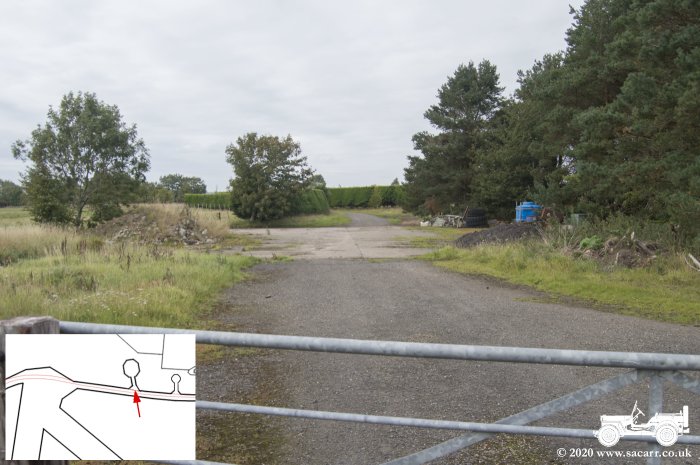
|
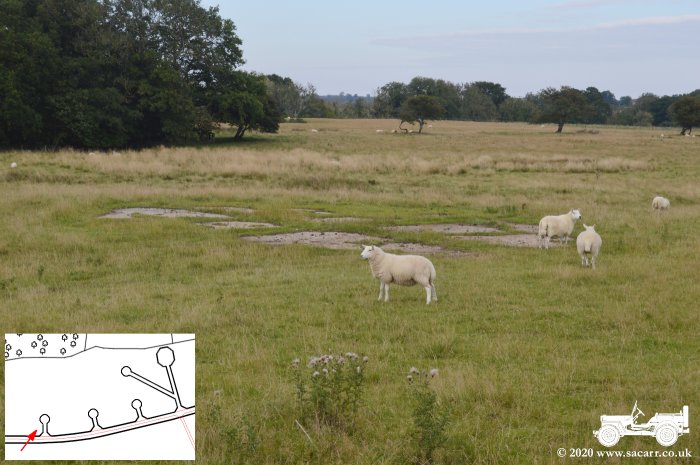
|
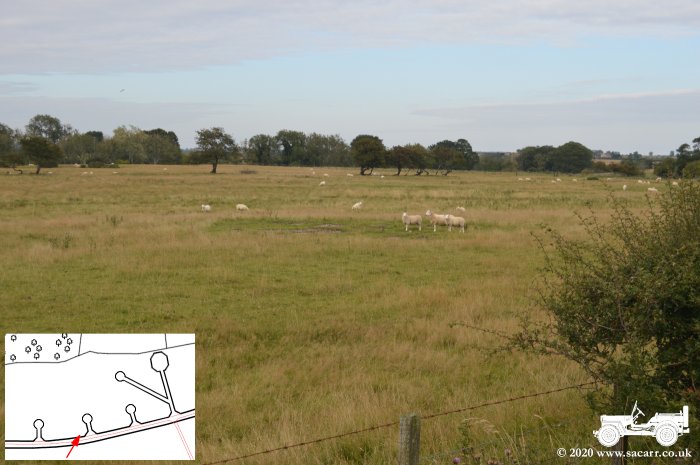
|
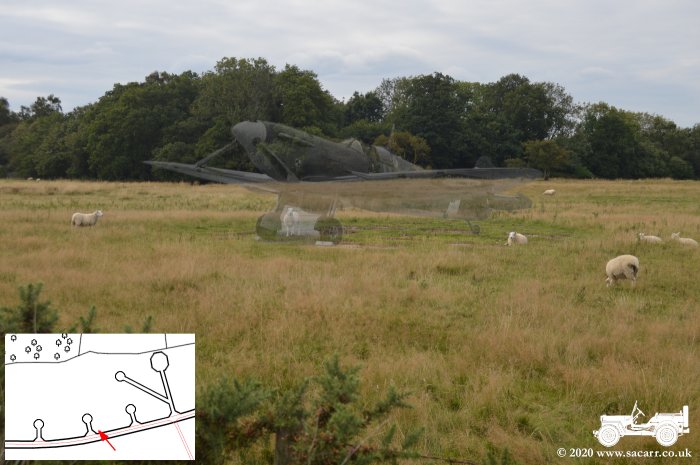
|
About half way along the perimeter, there's a new road that has been built
across the airfield, leading to a farm. A short drive along this road brings
you to a point around two thirds of the way East along the main runway. The
second picture below is taken from the middle of the runway width, looking
East. Off to the left is a red/rust coloured Romney hut type building, along
with other farm buildings. In the distance is the huge wall of the firing
butt.
|
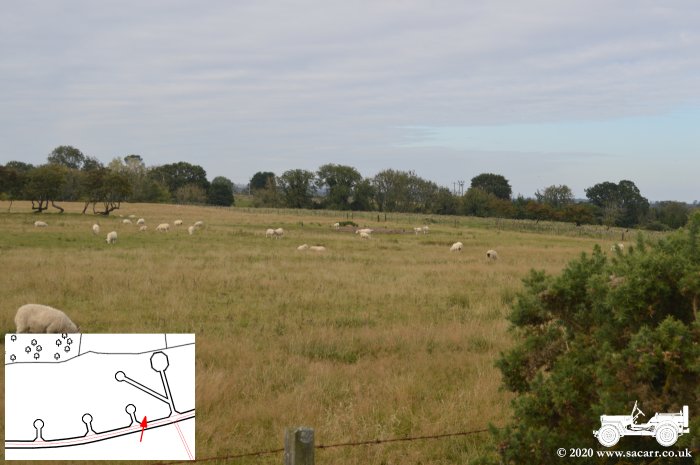
|
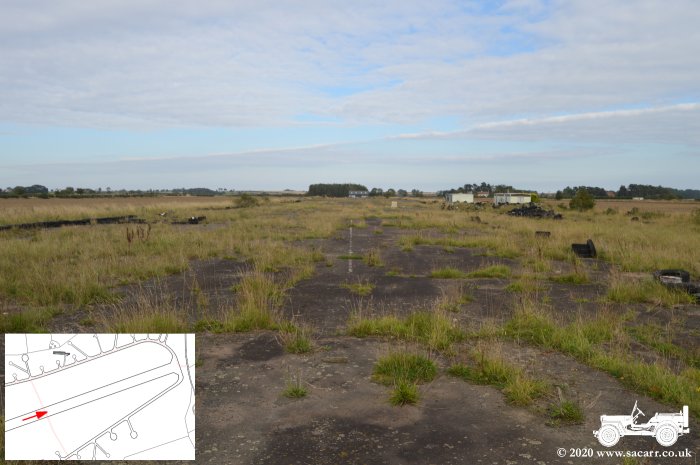
|
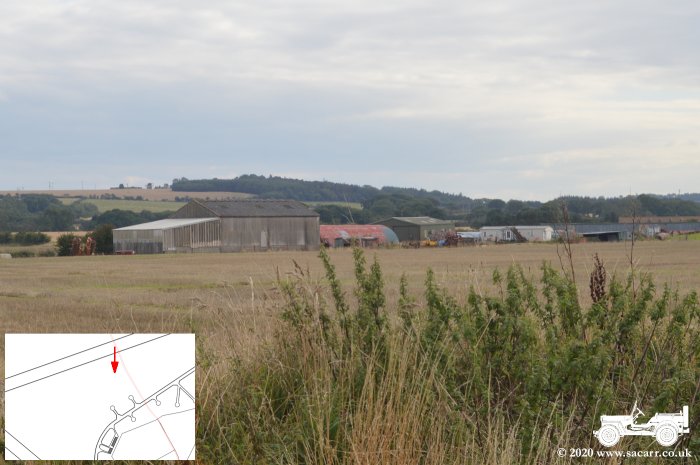
|
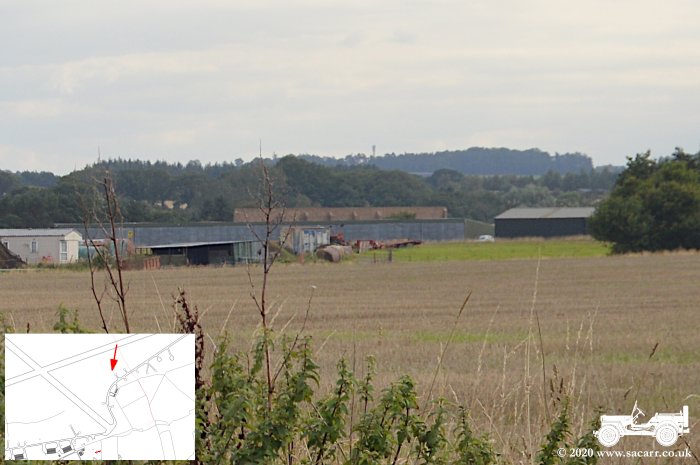
|
In this take off picture from 2014, heading East along the main runway, the
firing butt can be seen at the right side of the image. Back on the ground,
the second picture shows the main runway looking West. Back in the air again,
on finals for runway 08, the former main runway. So after some pictures on the
runway, the car was turned to head back along the perimeter track. The next
picture shows some of the broken up tarmac leading to another small pan
dispersal near an old farm building.
|
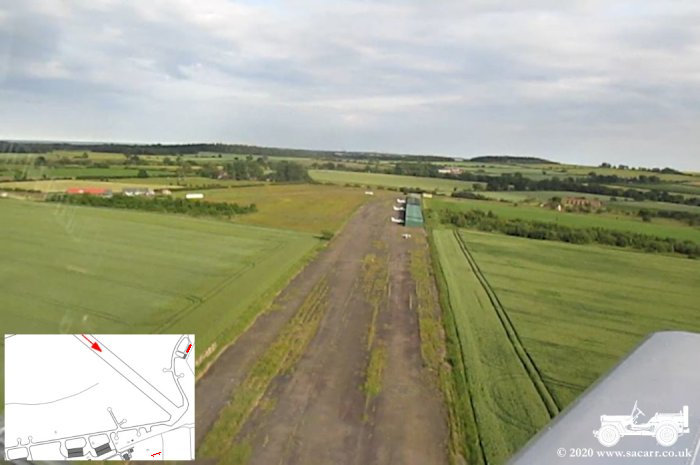
|
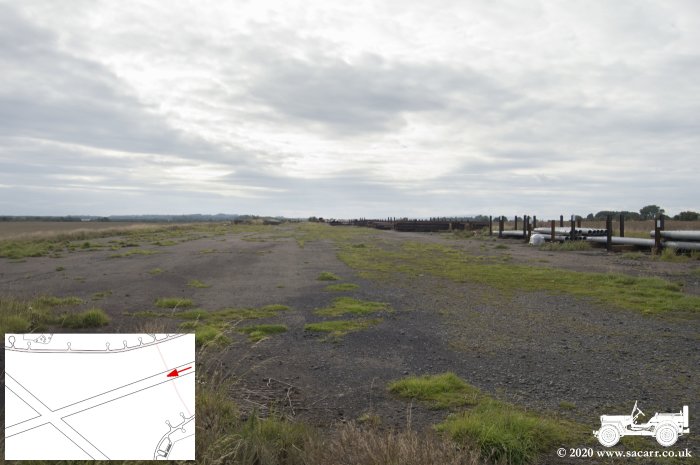
|
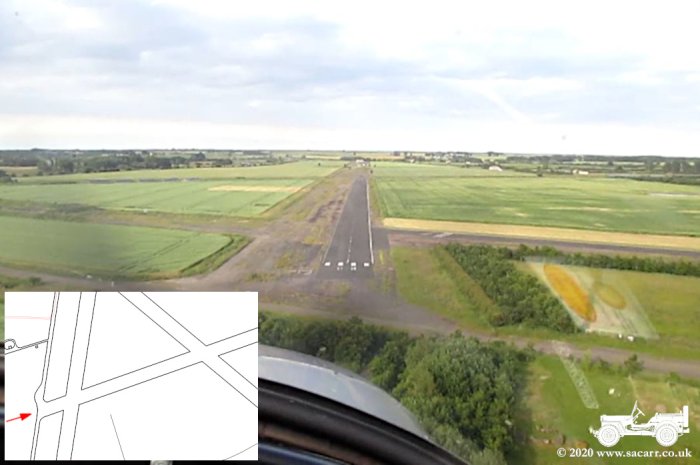
|
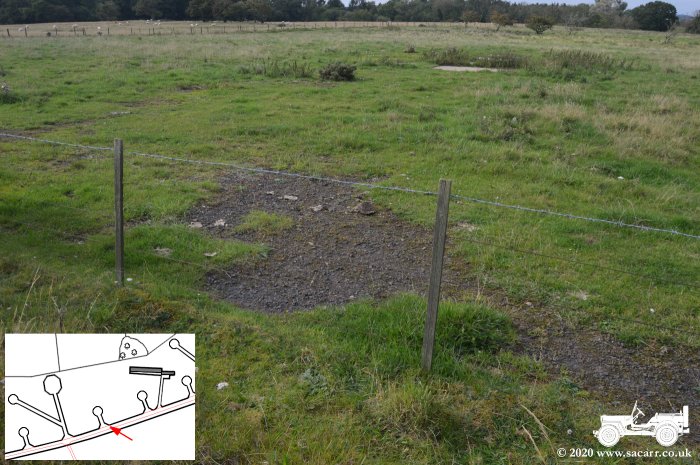
|
Two airfield structures stand close to this point. The nearest square building
has a danger high voltage sign on it. I don't know whether it was a wartime
sub-station or was converted after the war. Just beyond is a concrete tunnel
air raid shelter, like the one at RAF Morpeth, that was behind the blister
hangar. The concrete roadways all seem to be still there, showing up on Google
Earth, but are slowly being overgrown. It would be nice to clear a dispersal
with a shovel, just to get some clear pictures and measurements of the
concrete slabs.
|
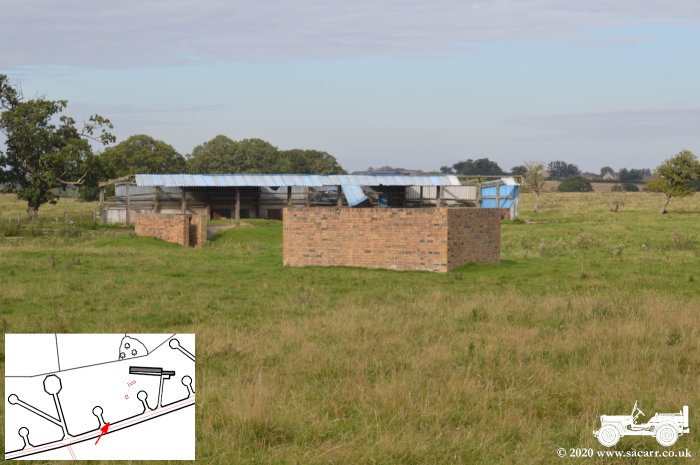
|
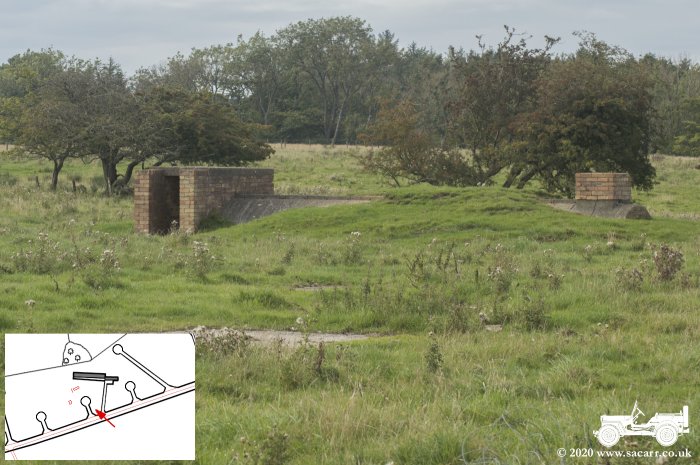
|
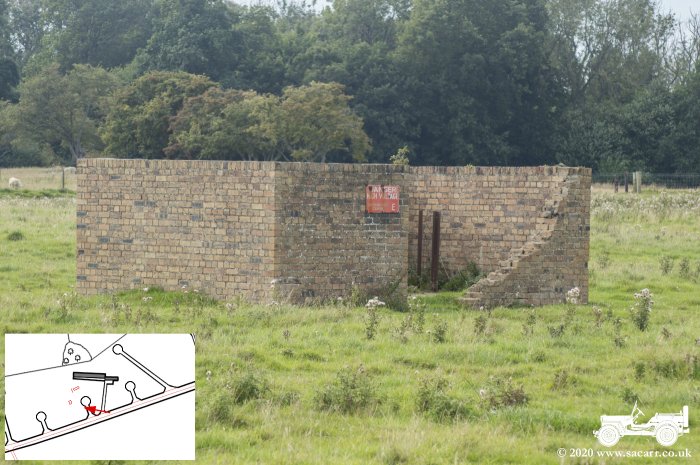
|
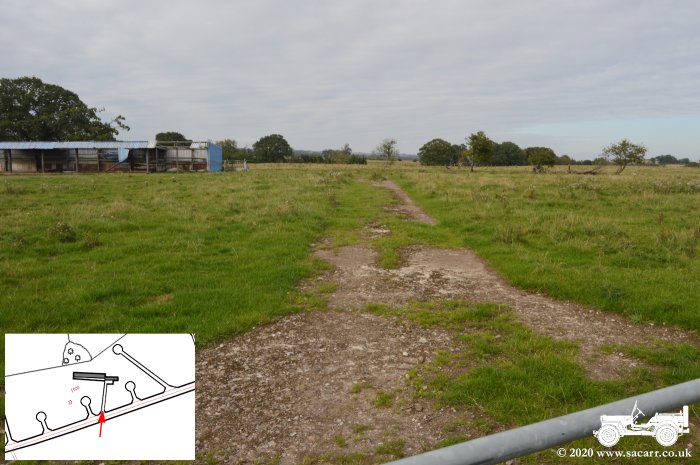
|
The next few pictures show this dispersal and building area, along with views
each way along the perimeter track. There's quite a rise in the ground along
this perimeter track looking back to the West.
|
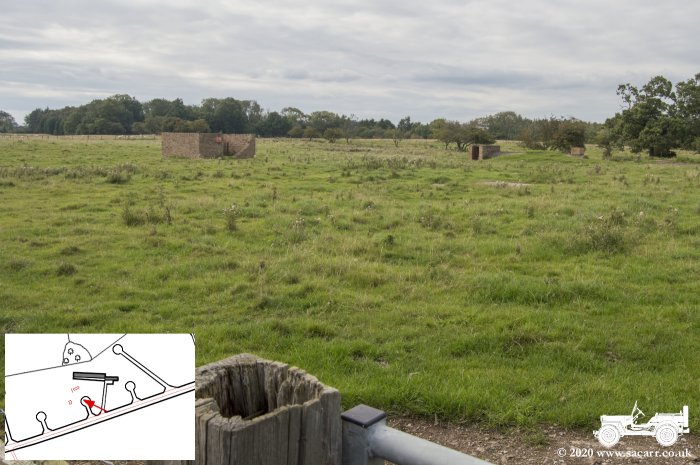
|
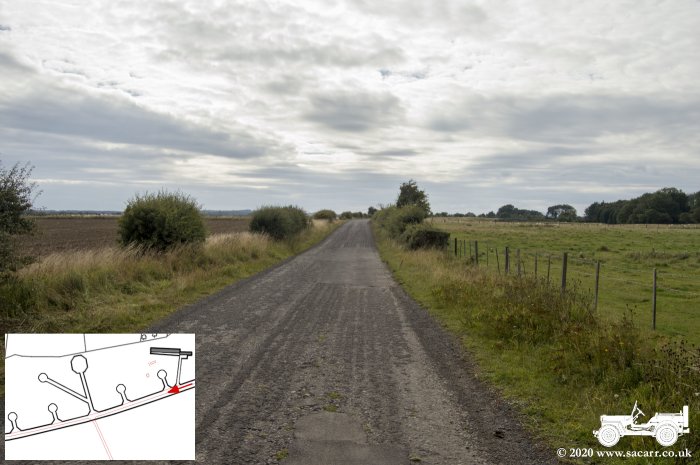
|
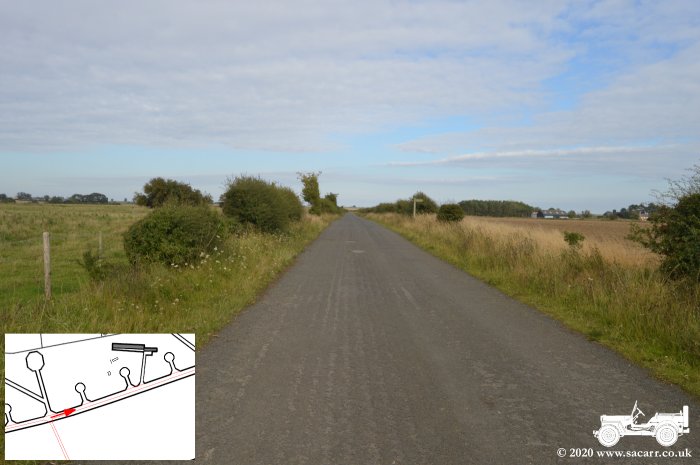
|
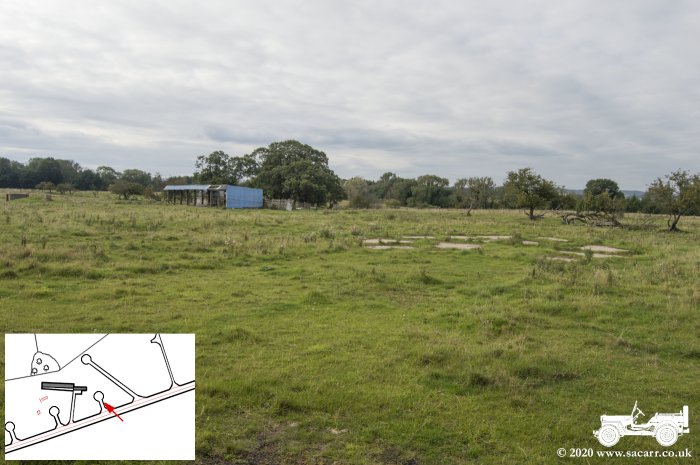
|
The next picture shows the track leading to one of the pan dispersals. It is
completely overgrown, but the short grass shows its path. The concrete appears
to be still under there, limiting growth. By now we were almost at the end of
this perimeter track and as it begins to swing around to the right, there are
three surviving buildings to be seen. One of the concrete roads leads to the
second underground fuel store.
|
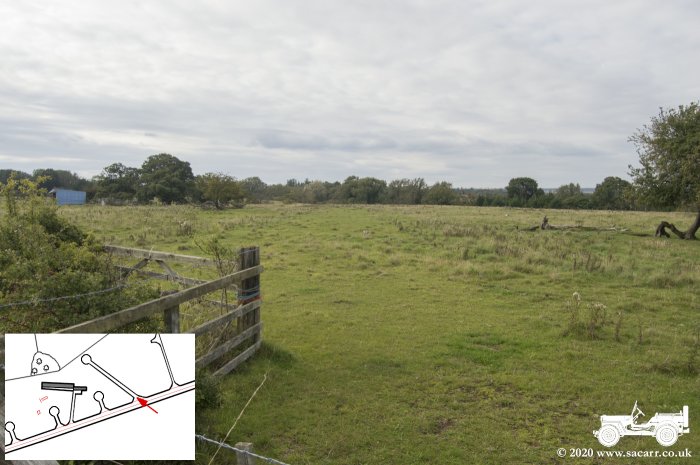
|
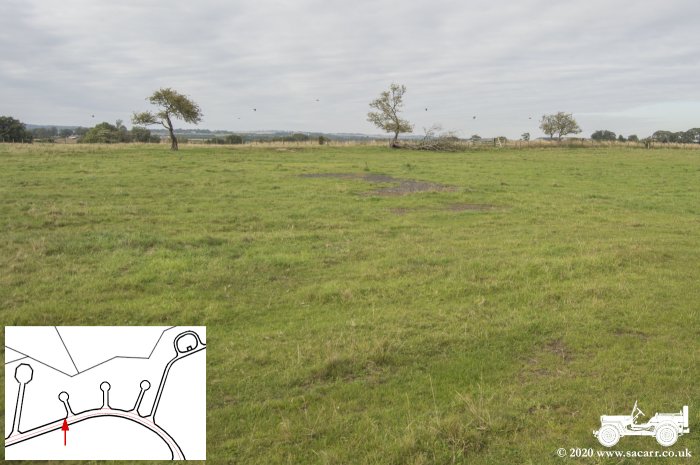
|
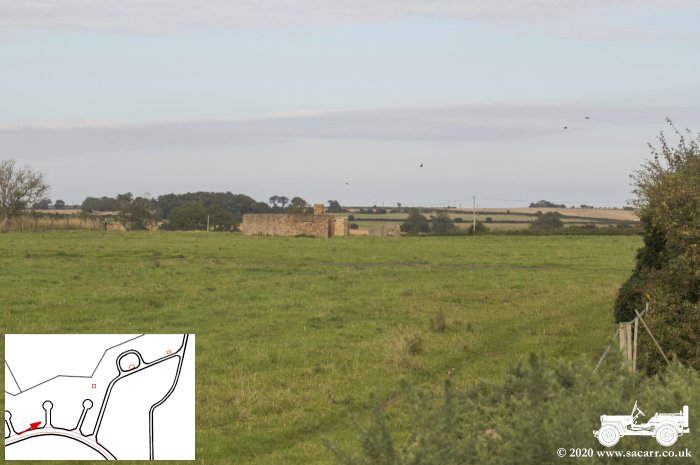
|
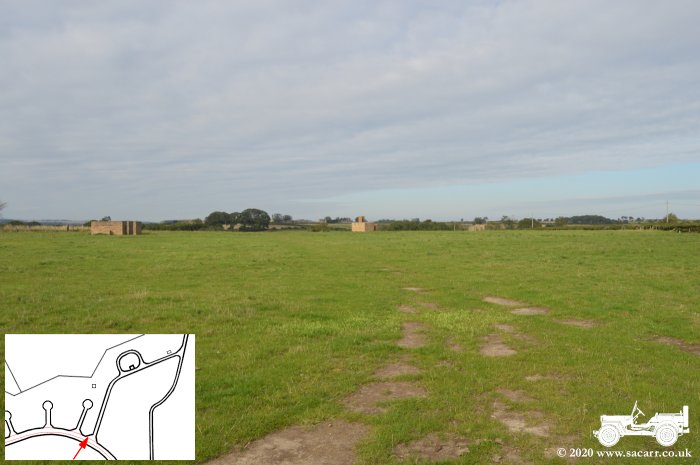
|
I don't know what the closest, rectangular building was used for It is
roofless and has a blast wall across the door. The second building with the
small tower, is on the fuel store site, so is probably the pump house. It
still appears to have its flat roof. The third building is also roofless and
doesn't look in great condition. It is located closest to the public road. The
last image looks more South across the end of the main runway.
|
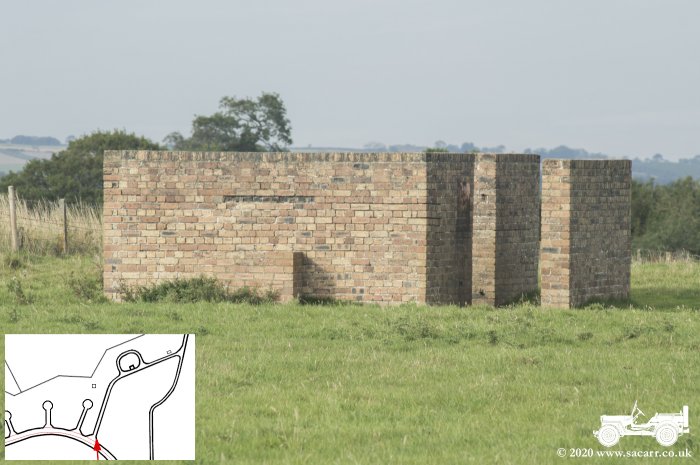
|
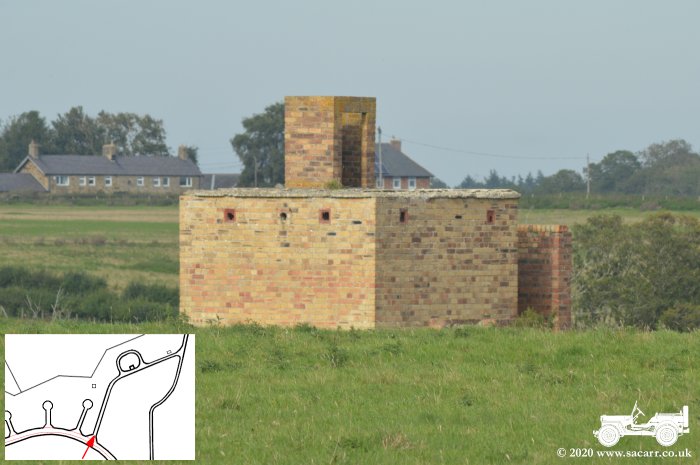
|
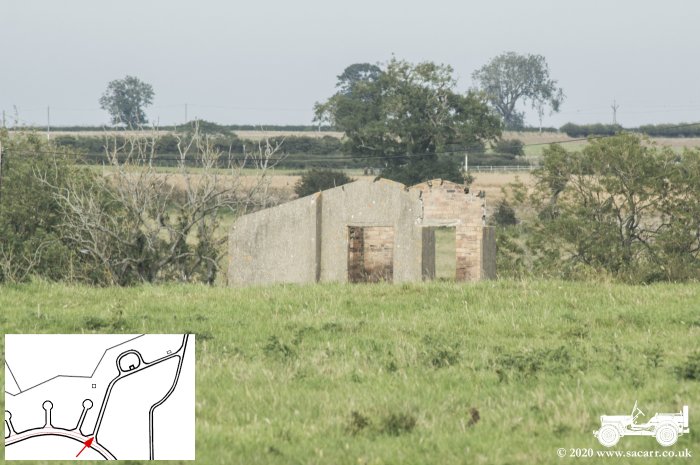
|
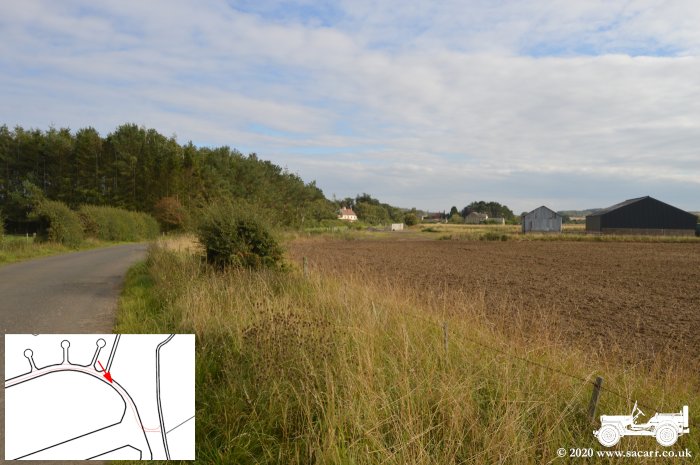
|
At the end of the runway, looking South, the perimeter track curves right
again towards the technical site. The next picture is looking North, back
around the perimeter towards the fuel store. Picture three is looking West
along the main runway, the far end of which is still used for flying. The last
picture is once again the perimeter track, curving off to the technical site
on the South side of the airfield.
|
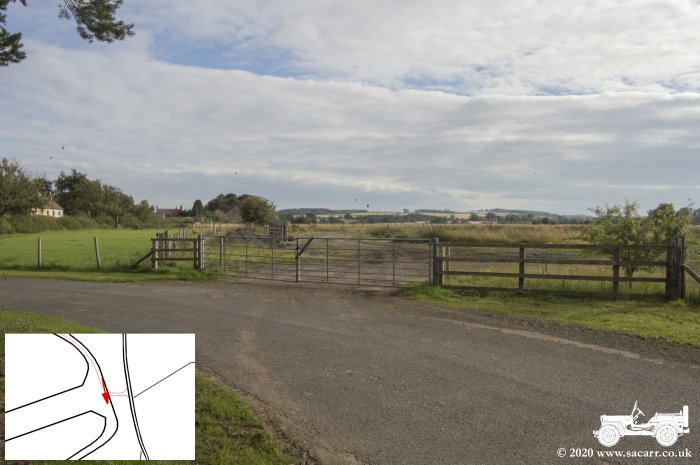
|
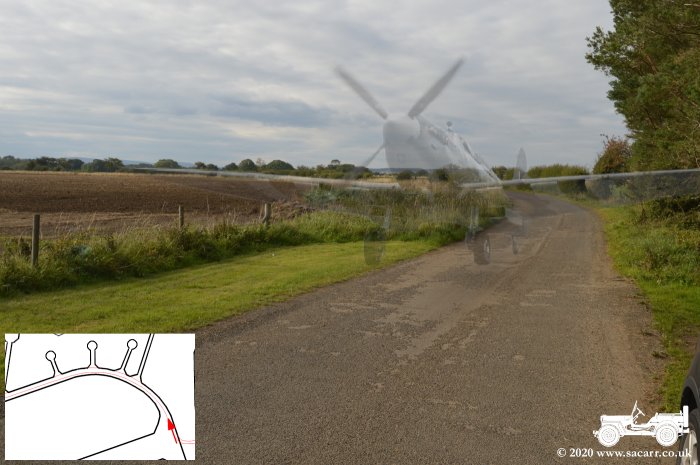
|
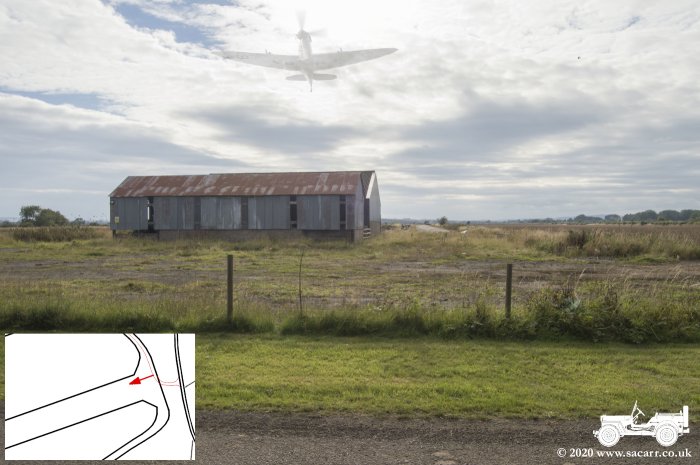
|
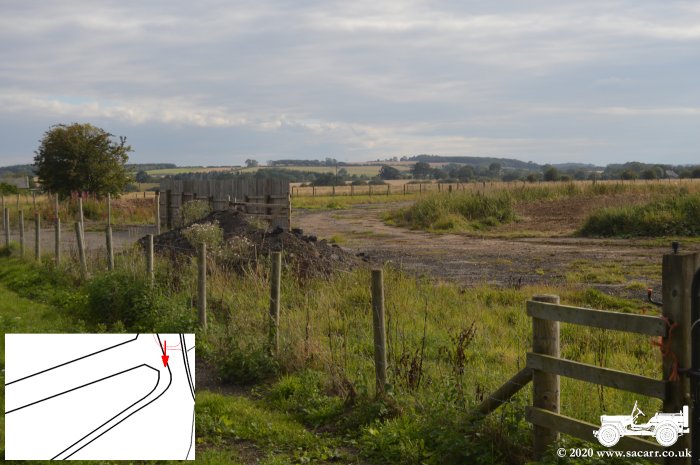
|
There are a few buildings that survive on the technical site, but as they are
on private property, I couldn't get close enough last visit or this vist to
see anything.
|